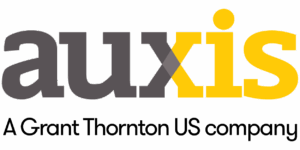The promise of artificial intelligence is immense, yet many organizations find that capturing its true value is an elusive goal. According to Gartner, only 35% of organizations that have adopted AI say they’ve realized significant business value from it.
The majority remain stuck in the early experimental stages, unable to turn pilot projects into sustainable enterprise impact. This failure to achieve a true AI transformation stems from the gap between a visionary AI strategy and a clear, actionable plan for execution.
An AI implementation roadmap is the bridge that closes this gap. It is the detailed blueprint that guides an organization from initial concept to enterprise-scale deployment, ensuring every step is purposeful, aligned with business goals, and designed to deliver measurable returns.
Without this structured approach, even the most promising AI initiatives can fail. This guide will outline the critical phases of a successful AI implementation roadmap, providing a clear framework for leaders to navigate their AI transformation journey.
The role of a strategic AI implementation roadmap
Bridging the gap between AI’s promise and its actual ROI requires a clear plan for execution. That plan is the AI implementation roadmap—a strategic framework that connects your business goals to a concrete, actionable technology plan. More than a simple project timeline, it’s a comprehensive blueprint that addresses not only AI technologies but also the critical elements of people, business processes, and data governance.
The primary purpose of the roadmap is to create strong alignment between technology initiatives and key business stakeholders, ensuring everyone is working towards the same measurable outcomes. This structured approach helps to manage risk, secure and maintain executive buy-in, and build a solid foundation for the organizational change required for success.
A successful roadmap is built on five critical phases, each designed to ensure your journey from pilot to enterprise-scale deployment is disciplined, measurable, and delivers sustainable value.
Phase 1: Assessment and discovery
The first step in any successful AI journey is a comprehensive assessment of your current operational landscape. This phase is about looking beyond the hype of the technology and identifying the specific business challenges that AI is best positioned to solve.
This involves a deep-dive analysis of your existing processes, data infrastructure, and organizational readiness. The goal is to pinpoint high-impact, high-feasibility opportunities where intelligent automation can deliver the most significant value in the shortest amount of time. A thorough discovery phase ensures your roadmap is built on a solid foundation of real-world needs, not just technological possibilities.
Phase 2: Prioritization and business case development
Once potential opportunities have been identified, the next step is to prioritize them based on their strategic value and expected return on investment. Not all AI use cases are created equal, and a disciplined prioritization process is essential to focus resources where they will have the greatest impact.
For each high-priority initiative, a robust business case must be developed. This document should clearly articulate the expected outcomes, including cost savings, efficiency gains, and improvements in service quality. A strong business case is the key to securing executive buy-in and aligning all stakeholders around a common set of goals.
Phase 3: The pilot program
With a clear, prioritized initiative and a strong business case, the next logical step is to launch a pilot program. A pilot is a small-scale, controlled implementation designed to test the solution in a real-world environment, validate assumptions, and uncover any unforeseen challenges.
The pilot phase is a critical learning opportunity that serves as the gateway to enterprise-wide value. This is the stage that differentiates successful, scalable AI programs from mere experiments. While IDC reports that as many as 80% of AI projects never make it past the pilot phase, this statistic doesn’t highlight a failure of the technology itself, but rather the immense value of having a strategic approach to AI adoption.
A successful pilot, therefore, is not the final step but a powerful proof point. It not only proves the value of the solution but also builds the crucial momentum and confidence needed for a broader, enterprise-wide rollout, unlocking the full value of your AI investments.
Phase 4: Scaling and industrialization
Following a successful pilot, the focus shifts to scaling the solution across the enterprise. This phase, often referred to as industrialization, is about moving from a single successful project to a repeatable, enterprise-grade capability.
This requires the development of a robust governance framework, standardized deployment methodologies, and a plan for managing the organizational change that comes with new ways of working. Effective scaling is what separates isolated AI “wins” from a truly transformative program that delivers compounding value over time.
Phase 5: Continuous improvement and value realization
AI transformation is not a one-time project; it is an ongoing journey of continuous improvement. The final phase of the roadmap is focused on establishing a framework for monitoring performance, identifying new opportunities, and continuously optimizing your AI solutions.
This involves real-time tracking of key performance indicators and a governance structure that ensures the benefits outlined in the initial business case are being realized. This commitment to continuous improvement is what ensures your AI program remains a dynamic and powerful engine for business growth.
Why Auxis: Turning Your AI roadmap into measurable ROI
A strategic AI roadmap is essential, but it’s only half the battle. Many organizations struggle to bridge the gap between their vision and the complex reality of enterprise-wide deployment, lacking the specialized resources to navigate the challenges of change management, technological integration, and value realization. A partner with a track record of not just advising but doing can be the decisive factor between a stalled initiative and a transformative success.
This is where Auxis provides a distinct advantage. We are not just consultants; we are operators with over 25 years of experience transforming back-office functions. As a UiPath Platinum Partner, we combine our deep expertise in process optimization with best-in-class AI capabilities to deliver tangible results. Our business-led approach ensures that your AI implementation roadmap is pragmatic, measurable, and directly tied to your most critical business goals, providing the hands-on partnership you need to accelerate your journey from strategy to sustainable success.
If you are ready to see ROI from AI, Auxis can help. To learn more about the benefits of artificial intelligence solutions, explore our learning center.
Frequently Asked Questions
What is an AI implementation roadmap?
How long does it take to implement an AI roadmap?
What are the biggest risks in AI implementation?
How do I get started with building an AI roadmap?

